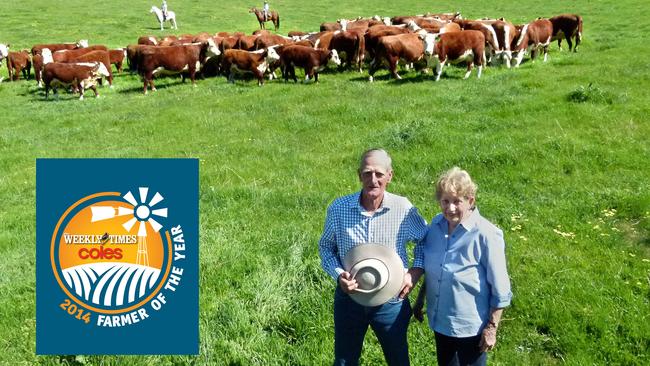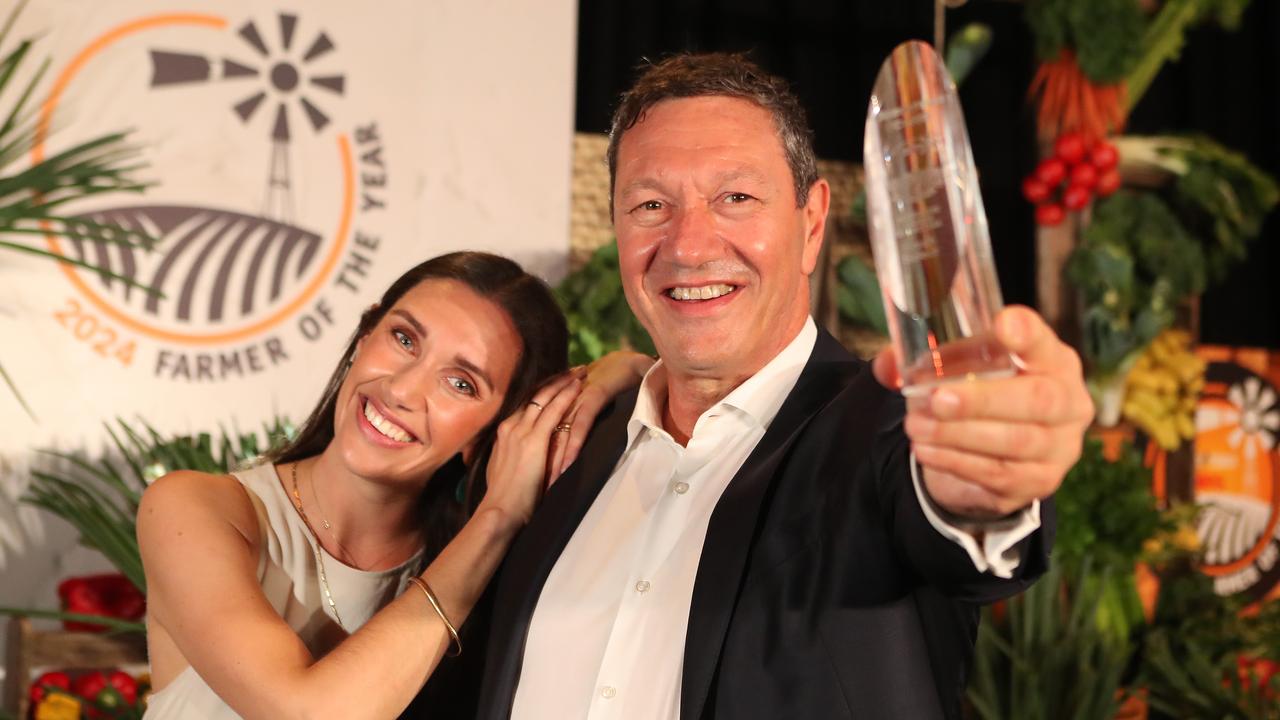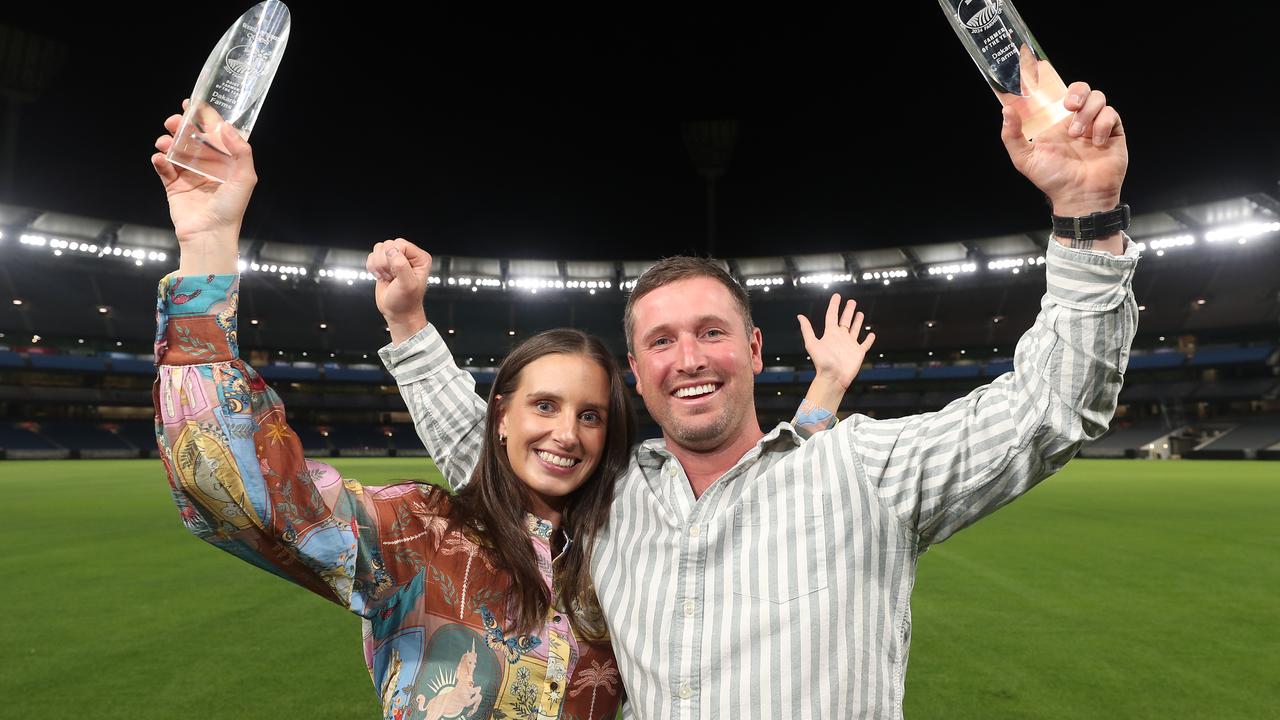Barry Newcomen of Newcomen Herefords at Ensay goes for growth
BARRY Newcomen surveys the luminous green pasture of his Ensay Hereford stud, below a canopy of the bluest of skies.

BARRY Newcomen surveys the luminous green rolling pasture of his farm below a canopy of the bluest of skies.
“I don’t think I’ve seen the country look better,” says Barry, who runs the Newcomen Hereford stud at Ensay in Victoria’s high country. “This season is as good as I can remember at this time of year. The dams are mostly full, the stock and country looks well and the quality of pasture is better than it used to be.”
This year’s good season will hopefully be perfectly timed for the annual mountain calf sales in March, at which Barry and his wife, Topsy, will offer 200 calves. The sales are followed by the Newcomen’s on-farm bull sale on March 18, when they will offer 50 of their best two-year-olds.
Barry said if the drought in Queensland breaks restocker demand would increase and cattle would fetch decent prices down south.
“In 2011, I sold over 200 calves at an average of $920. This year I averaged $560,” Barry said.
“Even though this year was a tough selling year I had a record for our on-farm sale, with my top bull selling for $16,000.”
Barry and Topsy farm 1260ha over three properties around Ensay, with a total herd of 860, or 350 breeding cows.
About 50 of these are Hereford-Shorthorn cross — Barry says the roan offspring and the subsequent joined cross make great calves because the roans are good milkers.
At 76, and having grown up on a Hereford farm at Ensay, Barry has seen his share of good and bad years in the cattle game, which has finetuned his philosophy on how to produce top quality weaner calves and bulls.
For 34 years Barry and his brother, Evan, farmed in a partnership that totalled 2225ha, with mostly Herefords, but a proportion of roans and Merinos — only sold when ovine Johne’s disease hit the district in the mid-1990s. The brothers’ partnership dissolved about the same time.
“At that stage Reece (one of Barry and Topsy’s two children) was an accountant and I asked him who was making money and he said well-run studs,” said Barry, whose daughter Rowena was livestock editor at The Weekly Times in the ‘90s.
“I said I didn’t know anything about running a stud and he said you can have five cows or 500.”
To establish the stud, Barry bought seven cows and eight heifer calves from the now-dispersed Dunoon Hereford stud at Holbrook in NSW.
He has grown the herd from that base, bringing in genetics through artificial insemination and top bulls.
Barry said while the stud was a success, it was a “lot of hard work”.
“I’m into Breedplan. You’ve got to do all the measurements, weigh them three times, have them scanned, tested by vets, take blood tests, dehorn and dehorn again if it doesn’t work and I do a lot of AI (artificial insemination) now too,” he said. “It’s been very rewarding, both financially and personally.”
He said the secret to a good stud was to have the right genetics. In the mid-2000s, for instance, he joined with another stud to buy a bull at Wodonga’s Hereford National multi-vendor sale, Mawarra Sandstorm, for $52,000, a record at the time.
“He wasn’t financially rewarding with the sale of his bulls but we sold more semen than we paid for the purchase price.”
In 2002 he paid $24,000 for Kaludah Monoploy, with his offspring returning more than $250,000. “I wish I could do that with every bull I buy. I’ve been lucky enough to buy some great bulls.”
Barry buys about two bulls a year and said his first impressions of a bull generally proved to be correct.
“I want one that looks over the gate, not through the gate, in other words he carries his head up rather than down like a buffalo. If you have a nice long neck and smooth shoulders, you have less calving troubles.”
If they are appealing and structurally correct then he uses Breedplan figures to aid in selection.
Half Newcomen Herefords females are joined with AI in June, with up to 60 per cent success rate; with all subsequently joined with a bull.
He said the aim was to get as many calves on the ground in April or earlier, aiming for bigger calves in time for the calf sales in the second week of March. All calves worth keeping are tagged in their ear at birth.
This year there were 95 bull and 90 heifer calves, with agent Michael Glasser from GTSM in Wodonga later classing the bulls down to about 65 to keep. Surplus cows, and weaners not sold in the calf sales, were sold in Bairnsdale, direct to other farmers or over the hooks.
Barry said feed was also important to produce the best cattle. “My philosophy is that it’s a waste of time having good genetics if you don’t feed them.”
Pastures have been improved over the years with phalaris, lucerne, cocksfoot and drover cocksfoot.
More recently Barry has applied Munash fertiliser in some paddocks, which he attributes to the quality of grass this season. “I’m no agronomist but I think it does as good a job as super if not better.”
Ensay receives about 660mm of rain a year but Barry said the area had copped its fair share of drought, with one of the worst in ’98 seeing him reduce his herd numbers significantly, but never his core breeders.
From 2000 until this year Barry also kept 500 Merino ewes, with an average 19-micron fleece, selling them simply because he needed more land for the cattle.
“There’s probably more money in sheep than cattle so I might go back to them one day,” he said.
“I probably love cattle farming now more than years ago, though, because right now the season is good and I don’t owe as much as I used to.”


